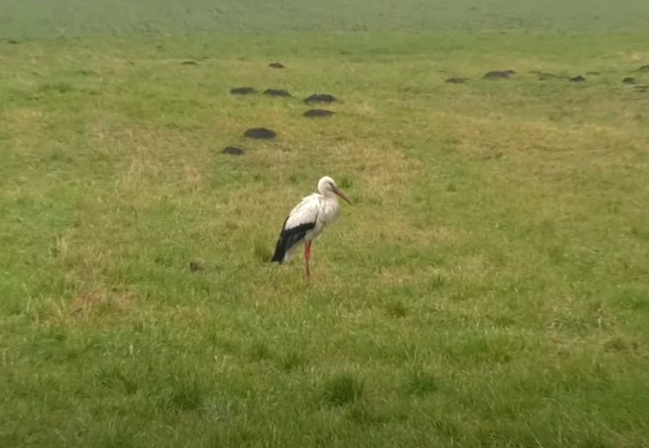Residents of a Polish village have been taking care of a stork that, unlike most of its kind, has not migrated south for the winter. The bird has been profiting from recent unseasonably warm weather, and does not shy away from accepting offerings from its human neighbours.
“Even when a pedestrian walks by, he is already running up to them, which means he knows that he is about to get some treats,” Jarosław Ślemski, a resident of the village of Krzaki in central Poland, told broadcaster TVP.
Storks are considered a national symbol in Poland, which until recently was their largest European nesting ground, with around 20-25% of the world’s population coming there. The birds’ large nests are a distinctive feature of the Polish landscape.
The animals then fly thousands of kilometres south to Africa for the European winter. However, in Krzaki one has stayed behind. Residents are unsure if it is a “local” – from among the storks that nest in the village in the summer – or a visitor who stopped on the way from elsewhere.
The stork goes out into the fields every morning around nine o’clock, wading through the grass in search of food. At first, the residents did not know what to feed the bird, so they gave it bread. Now, however, it can get such treats as offal and hardboiled eggs.
TVP notes that every year a small number of storks do stay in Poland for the winter. However, while they have primarily been sick or weak birds – for example those that hatched late and were too young to fly away in August – an increasing number of healthy ones now choose not to migrate.
If “the storks survive until spring…they choose again not to migrate the following year”, said Paweł Kowalski, a forester and stork carer from the wildlife rehabilitation centre in Koło, central Poland.
“This phenomenon will increase,” environmental scientist and bird protection specialist Ireneusz Kaługa told the Polska Times newspaper back in 2017.
Overall, however, the number of storks in Poland has been decreasing in recent decades, as land acquisition for agriculture deprives the birds of foraging space.
In 2015, Poland lost its title as Europe’s largest European nesting ground for storks to Spain, noted state energy company Energa, which sponsors an internet encyclopaedia about storks, Bocianopedia (Storkpaedia).
At that time, the population of this bird was 45,000 pairs, which was 15-20% lower than a decade earlier.
Main photo credit: TVP screenshot

Alicja Ptak is senior editor at Notes from Poland and a multimedia journalist. She previously worked for Reuters.




















